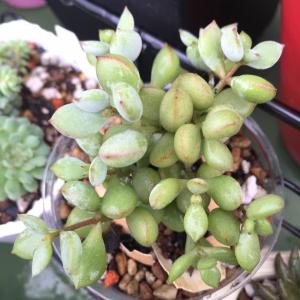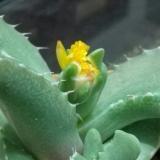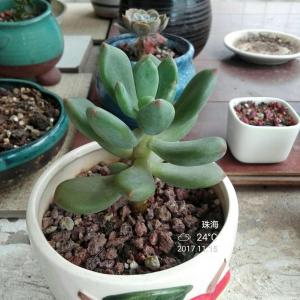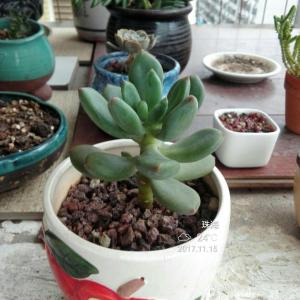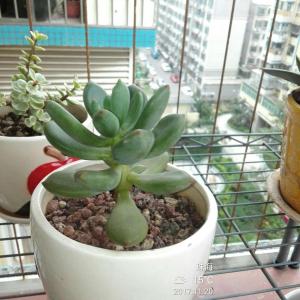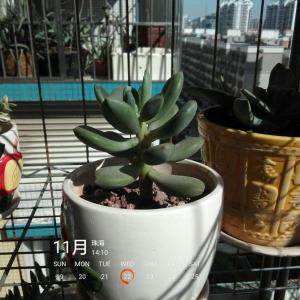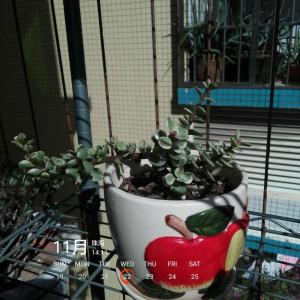文章
权问薇
2018年02月05日


豆瓣绿的花期与花态
它的花期是2月至4月与9月至12月,两个阶段。但其花朵并不像其它植物那样明显,只是从叶子中间长出一根火柴棍粗细的、白色的小花序。花朵非常的小,若用放大镜看的话,才可以看到花序上的小花朵,非常的密集,但是花蕊、花瓣、花芯都很具有。
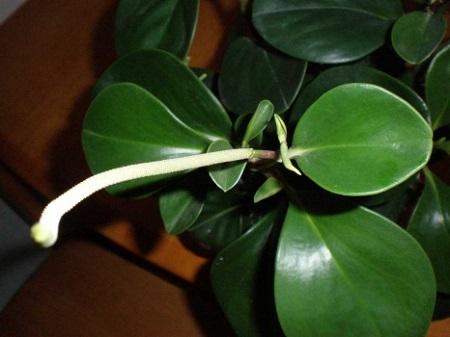
豆瓣绿开花后怎么处理
此植物主要是观其叶子,而且它的花并没有什么太出彩的地方,所以其花也没有观赏性,在开花时还会消耗植物过多的养分,导致其叶子因养分不足而降低观赏度,在其开花后我们就要将其花序剪除,来保证叶子的正常生长。
所以在养殖此植物时,临近花期时,就要经常观察,若有花序长出,就要及时剪除。

需要剪除花朵的其它植物
其实许多常见的植物开花后都要将其剪除,来保证植物叶子的健康与观赏度。有些观叶植物的花更是留不得,因其花谢后,植物也将死亡,例如多肉植物。许多常见的多肉植物只要一天花,植物就会随着花谢而死亡,对于爱肉的友友们来说,开花是一件非常可怕的事。好在豆瓣绿开花只会影响其叶子的生长,不会造成植物死亡。

0
0
文章
权问薇
2018年02月03日


君子兰冻一冻,春天开花100朵!
君子兰养4-5年,或者长到12片叶片,才可以开花。但有的花友,这两个条件都满足了,为什么还是不开花呢?有可能是因为养护温度太高,君子兰无法春化长出花箭!

君子兰促花措施:
1.适当的低温。
适当低温有利于君子兰抽花箭,所以,冬天君子兰的养护温度不要超过15度,超过15度不容易春化长花箭,这就是广东等地君子兰很少开花的原因。

2.营造大温差。
大温差有利于君子兰花箭,5-15度之间最佳,最好不要低于5度,低于5度君子兰容易冻伤。
3.增施磷钾肥。
君子兰春天开花需要大量养分,所以冬天要给它适当补充磷钾肥,大家可以在盆沿挖2个小洞,撒一点点骨粉。或浇水时,加点磷酸二氢钾!
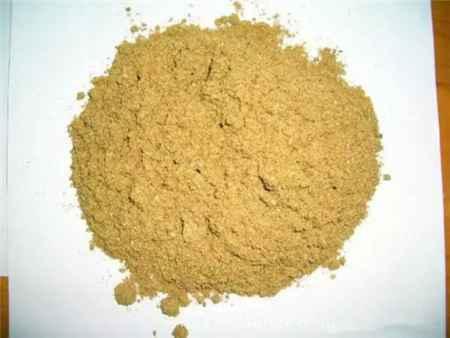
4.控制浇水。
君子兰在5-15度的低温环境下,需要控制浇水不然容易冻伤,大概1月浇1-2次即可,中午温度高的时候浇。

蝴蝶兰冻一下,花朵开成串!
快过年了,市场上的蝴蝶兰越来越多,开花后摆家里2-3个月都不谢,特别喜庆,那怎么让蝴蝶兰猛蹿花箭,开花多多呢?答案就是“折磨”它一下!

蝴蝶兰促花措施:
1.大温差折磨。
蝴蝶兰开花也需要一定的大温差刺激,晚上可以放冰箱冷藏,设置温度在8-10度左右,白天则拿出来放暖气房,温度20-25度左右,这样一天的总温差超过10度,持续6-8个星期,就能长出花箭了!

2.长花梗后提升温度。
长出花梗后,就把蝴蝶兰一直放在暖气房,保证温度22-30度之间,促进花梗继续生长,不需要再营造大温差!
3.增加光照时间。
蝴蝶兰长出花梗前后,都要放南阳台等光照充足的地方,使劲晒太阳,晒太阳越多,花梗越多,花朵也越多!

4.增施磷钾肥。
想要蝴蝶兰开花,开花前包括长出花梗时期,都要施磷钾肥,可以施复合肥,也可以施磷酸二氢钾,大概1个月2-3次即可,薄肥勤施,开花后不要施了。
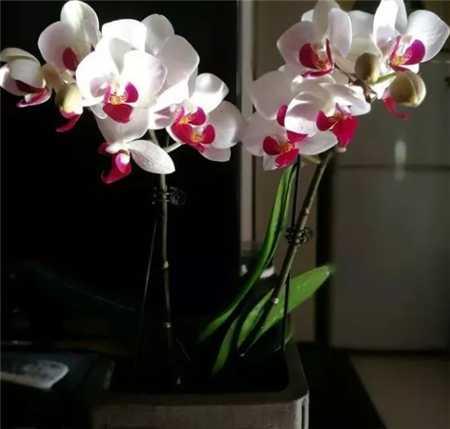
5.提高湿度。
蝴蝶兰喜湿,催花期间要保证较大的空气湿度,才有利于花梗生长,可以往蝴蝶兰叶片上多喷水,也可以在它周围放几个盛水的托盘增湿。

栀子花冻一冻,来年花朵压弯枝!
栀子在北方是很难养的,经常黄叶,而且很难养开花。但有时候我们不要它娇惯它,让它冬天挨挨冻,明年会开花更多哦!

栀子花促花措施:
1.适当低温使其休眠。
栀子花冬天最佳温度是0-12度,这个温度栀子花休眠而且不会冻伤,如果高于12度,则会发芽,消耗过多养分,导致明年开花少或者不开花。

2.控制浇水预防冻伤。
休眠期间的栀子花,新陈代谢缓慢吸收能力减弱,所以要控制浇水,以防积水烂根和冻伤,盆面发白特别干才能浇,大概1个月2次左右即可,中午浇。
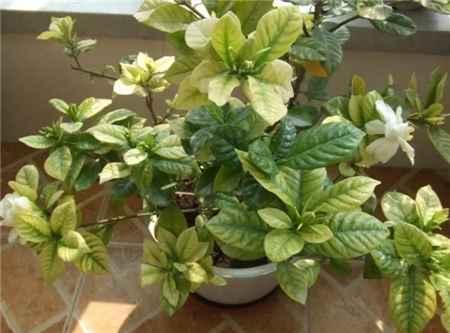
3.控制不要修剪储存养分。
栀子花休眠之前和休眠过程中,不要进行太多修剪活动,尽量保留较多的健康叶片,多晒太阳进行光合作用,积累足够多的养分利于越冬,清明节再重剪。

除了以上3种花,
像兰花、月季、茉莉等花卉,
冬天也需要一段时间的低温才能孕育花蕾,
大家不要一味得给花保温,
有时候适当的风雪会让它更坚强、更漂亮哦!
0
2
文章
Miss Chen
2018年02月01日

Description: This perennial plant is 2-5" (5-12 cm.) tall, eventually forming sprawling mats of cactus pads. An individual plant typically consists of 2-6 pads (modified fleshy stem-segments) that form either branched or unbranched chains (usually the former). These pads can become detached from each other easily, especially the uppermost and youngest pads. The pads are ascending to widely spreading. Individual pads are 1-2.5" (2.5-6 cm.) long, ½-1" (1.2-2.5 cm.) across, and slightly to moderately flattened; mature pads are ellipsoid, broadly ellipsoid, or obovoid in shape. Pad surfaces are medium green and glabrous; they often shrivel and become wrinkled during the dormant stage of winter, while remaining green. Scattered across the pads in diagonal rows are areoles (air pores) about 2-3 mm. across; they are initially white-woolly. The areoles contain inconspicuous glochids (fine spiny bristles) about 1-2 mm. long that are yellowish or brownish. In addition, clusters of 2-6 divergent spines develop from the areoles. These spines are ¼-1¼" (5-30 mm.) long, light gray or brown, straight, terete, and barbed at their tips. With age, some of the spines become detached from the pads. On young developing pads, scale-like leaves develop near the areoles that are 1-3 mm. long, green to reddish green, and lanceolate in shape; they are early-deciduous.
While most plants fail to bloom during a given year, usually a small minority of plants in a colony will produce 1-2 flowers each. Each flower is about 1½-2" (4-5 cm.) across when it is fully open, consisting of several rounded yellow tepals, numerous stamens, and a pistil with a single slender style. Sometimes the inner tepals are reddish or greenish at their bases. The filaments of the stamens are yellow or reddish brown, while their anthers are yellow. The style is whitish yellow with a cluster of 4-10 green stigmata at its tip. For a colony of plants, the blooming period occurs during mid-summer for about 1-2 weeks; each diurnal flower lasts only a single day. Sometimes there is a slight floral fragrance. Most flowers fail to set fruit. Among those that do, their fruits are ½-¾" (12-20 mm.) long and ovoid in shape. Immature fruits are green to reddish green, while mature fruits are tan to brown and bur-like in appearance. Like the pads, the fruits have areoles with glochids and barbed spines; the spines are more common toward the apex of each fruit. The interior of mature fruits is dry and seedy. These fruits are easily detached from their pads. Individual seeds are 4-6 mm. across, bone-colored to grayish brown, and hairless; they are rather chunky and irregular in shape. The root system is shallow and fibrous. This plant can reproduce vegetatively whenever detached pads have contact with the ground surface, as they willDistribution Map form new roots. This is the primary method of reproduction. It is not uncommon for little-disturbed plants to form sprawling colonies at favorable sites.
Cultivation: The preference is full sun, dry conditions, and open barren ground that is rocky, gravelly, or sandy. However, this cactus will adapt to ordinary garden soil if other plants are kept away from it. Under these conditions, it is not difficult to cultivate, however flowers and fruits are uncommonly produced in most geographical areas where this cactus occurs. This dwarf cactus is a good candidate for a sunny rock garden. It is the most winter-hardy cactus in North America.
Range & Habitat: The native Brittle Prickly Pear is found in only the NW corner of Illinois, where it is rare and state-listed as 'endangered.' Illinois lies along the eastern range-limit of this cactus; it is more common in areas further to the west, especially in the northern plains region of the United States. In Illinois, Brittle Prickly Pear occurs on a dry sand prairie of an abandoned army base that is in the process of being restored. Outside of the state, this cactus can be found in open grassy prairies, sandy hills, and rocky outcrops containing granite, limestone, or quartzite. In Illinois, this cactus is found in a higher quality natural area, while toward the center of its range, it sometimes occurs in disturbed areas (e.g., cattle pastures).
Faunal Associations: The nectar and pollen of the flowers attract primarily bees, including Halictid bees. Insects that feed destructively on Brittle Prickly Pear and other Opuntia spp. include the Coreid bug, Chelinidea vittiger, which sucks juices from the cactus pads and fruits; the stink bugs, Chlorochroa uhleri and Chlorochroa persimilis, which also suck juices from the cactus pads and fruits; larvae of the Syrphid fly, Copestylum vittatum, which bore into the cactus pads; and larvae of the Pyralid moths, Melitara dentata and Melitara prodenialis, which also bore into the cactus pads. The sharp spines and bristly glochids provide the cactus pads and fruits with some protection from browsing by vertebrate herbivores. Nonetheless, in some areas the Brittle Prickly Pear is eaten by the Plains Pocket Gopher, and its seeds are an important source of food for the Harris Ground Squirrel and many species of birds (Ribbens, 2007). Among cacti, the Brittle Prickly Pear is unusual in having individual pads and fruits that are designed to attach themselves to the fur of mammals, such as the American Bison; they also become attached to the clothing and skin of humans. By such means, new clonal plants and seeds can be transported across long distances.

Photographic Location: The wildflower garden of the webmaster in Urbana, Illinois.
Comments: In Illinois, Brittle Prickly Pear can be distinguished from other Opuntia spp. (Prickly Pears) by its small size and dry bur-like fruits. Like many other cacti, it produces large showy flowers that are short-lived. The detachable pads make this cactus difficult to handle while transplanting as they readily cling to fingers, hands, or gloves, thanks to its barbed spines. In particular, the inconspicuous glochids (fine sharp bristles of the areoles) can embed themselves underneath the surface of the skin and are difficult to remove. So its wise to exercise considerable care while handling this plant. Not only can the pads become detached by the movements of animals or people, even heavy rainfall, blowing snow, or a strong gust wind sometimes dislodge them. Each one of these detached pads has the potential to become another clonal plant, forming low mats of sprawling plants over time.
While most plants fail to bloom during a given year, usually a small minority of plants in a colony will produce 1-2 flowers each. Each flower is about 1½-2" (4-5 cm.) across when it is fully open, consisting of several rounded yellow tepals, numerous stamens, and a pistil with a single slender style. Sometimes the inner tepals are reddish or greenish at their bases. The filaments of the stamens are yellow or reddish brown, while their anthers are yellow. The style is whitish yellow with a cluster of 4-10 green stigmata at its tip. For a colony of plants, the blooming period occurs during mid-summer for about 1-2 weeks; each diurnal flower lasts only a single day. Sometimes there is a slight floral fragrance. Most flowers fail to set fruit. Among those that do, their fruits are ½-¾" (12-20 mm.) long and ovoid in shape. Immature fruits are green to reddish green, while mature fruits are tan to brown and bur-like in appearance. Like the pads, the fruits have areoles with glochids and barbed spines; the spines are more common toward the apex of each fruit. The interior of mature fruits is dry and seedy. These fruits are easily detached from their pads. Individual seeds are 4-6 mm. across, bone-colored to grayish brown, and hairless; they are rather chunky and irregular in shape. The root system is shallow and fibrous. This plant can reproduce vegetatively whenever detached pads have contact with the ground surface, as they willDistribution Map form new roots. This is the primary method of reproduction. It is not uncommon for little-disturbed plants to form sprawling colonies at favorable sites.
Cultivation: The preference is full sun, dry conditions, and open barren ground that is rocky, gravelly, or sandy. However, this cactus will adapt to ordinary garden soil if other plants are kept away from it. Under these conditions, it is not difficult to cultivate, however flowers and fruits are uncommonly produced in most geographical areas where this cactus occurs. This dwarf cactus is a good candidate for a sunny rock garden. It is the most winter-hardy cactus in North America.
Range & Habitat: The native Brittle Prickly Pear is found in only the NW corner of Illinois, where it is rare and state-listed as 'endangered.' Illinois lies along the eastern range-limit of this cactus; it is more common in areas further to the west, especially in the northern plains region of the United States. In Illinois, Brittle Prickly Pear occurs on a dry sand prairie of an abandoned army base that is in the process of being restored. Outside of the state, this cactus can be found in open grassy prairies, sandy hills, and rocky outcrops containing granite, limestone, or quartzite. In Illinois, this cactus is found in a higher quality natural area, while toward the center of its range, it sometimes occurs in disturbed areas (e.g., cattle pastures).
Faunal Associations: The nectar and pollen of the flowers attract primarily bees, including Halictid bees. Insects that feed destructively on Brittle Prickly Pear and other Opuntia spp. include the Coreid bug, Chelinidea vittiger, which sucks juices from the cactus pads and fruits; the stink bugs, Chlorochroa uhleri and Chlorochroa persimilis, which also suck juices from the cactus pads and fruits; larvae of the Syrphid fly, Copestylum vittatum, which bore into the cactus pads; and larvae of the Pyralid moths, Melitara dentata and Melitara prodenialis, which also bore into the cactus pads. The sharp spines and bristly glochids provide the cactus pads and fruits with some protection from browsing by vertebrate herbivores. Nonetheless, in some areas the Brittle Prickly Pear is eaten by the Plains Pocket Gopher, and its seeds are an important source of food for the Harris Ground Squirrel and many species of birds (Ribbens, 2007). Among cacti, the Brittle Prickly Pear is unusual in having individual pads and fruits that are designed to attach themselves to the fur of mammals, such as the American Bison; they also become attached to the clothing and skin of humans. By such means, new clonal plants and seeds can be transported across long distances.

Photographic Location: The wildflower garden of the webmaster in Urbana, Illinois.
Comments: In Illinois, Brittle Prickly Pear can be distinguished from other Opuntia spp. (Prickly Pears) by its small size and dry bur-like fruits. Like many other cacti, it produces large showy flowers that are short-lived. The detachable pads make this cactus difficult to handle while transplanting as they readily cling to fingers, hands, or gloves, thanks to its barbed spines. In particular, the inconspicuous glochids (fine sharp bristles of the areoles) can embed themselves underneath the surface of the skin and are difficult to remove. So its wise to exercise considerable care while handling this plant. Not only can the pads become detached by the movements of animals or people, even heavy rainfall, blowing snow, or a strong gust wind sometimes dislodge them. Each one of these detached pads has the potential to become another clonal plant, forming low mats of sprawling plants over time.
0
0
文章
Miss Chen
2018年01月30日

Description: This herbaceous perennial plant consists of a loose rosette of 2-5 ascending basal leaves, from which a flowering stalk develops. The basal leaves are 4-12" long and 2-5 mm. across; they are medium green, hairless, linear in shape, and somewhat truncate at their tips. Leaf venation is parallel. The flowering stalk is 6-16" tall and more or less erect; it is medium green, hairless, terete (circular in cross-section), and hollow. This stalk terminates in a simple umbel of flowers about ¾–1¼" across, consisting of 4-8 flowers and their pedicels. The umbel has a short obconic shape, and it is more or less flat-headed. Individual flowers are about ½" long and similarly across. Each flower has 6 tepals that are primarily white, 6 stamens, and a superior ovary with a single style. The interior base of the tepals is usually yellow, while the exterior of each tepal has a longitudinal vein that is often reddish or greenish. The tepals are elliptic or lanceolate-oblong in shape. The anthers of the stamens are bright yellow, while their filaments are white, pale yellow, or pale green. The pedicels are medium green, hairless, slender, and straight to slightly incurved; they are about ½–¾" long during the blooming period, but become up to 1½" long afterwards. At the base of the umbel of flowers, there is a pair of membranous bracts that are about ½" in length and lanceolate in shape; they eventually wither away. The blooming period occurs from mid-spring to late spring, while a second blooming period sometimes occurs during the autumn. There is no noticeable floral scent. Afterwards, the flowers are replaced by seed capsules. These capsules are 6-8 mm. long, globoid-obovoid and slightly 3-lobed in shape, and hairless. Immature capsules are green, while mature capsules become light tan, dividing into 3 parts to release their seeds. There are about 4-6 black seeds for each lobe of a divided capsule. The root system consists of a bulb about ½" across with fibrous roots below. The exterior of the bulb is brown and membranous, while the interior is white and fleshy. Both the foliage and bulb of this plant lack a noticeable garlic or onion aroma. Occasionally, basal offsets occur, creating clumps of clonal plants.
Cultivation: The preference is an open area with full or partial sunlight, moist to dry-mesic conditions, and a slightly acidic to alkaline soil containing rocky material or sand.
Range & Habitat: The native False Garlic (Nothoscordum bivalve) occurs occasionally in southern Illinois and rarely in central Illinois, while in the northern section of the state it is absent (see Distribution Map). This plant is found primarily in the southeastern United States and Southern Plains region of the country. Illinois lies along its northern range-limit. Habitats include upland prairies, hill prairies, sandy or silty riverbottom prairies, rocky glades (including limestone, dolomite, and chert glades), open upland woodlands, upland savannas, and thinly wooded bluffs. In Illinois, False Garlic is found in higher quality natural areas, where it probably benefits from occasional wildfires and other kinds of disturbance if it reduces competition from woody plants.
Faunal Associations: The nectar of the flowers attracts cuckoo bees (Nomada spp.), green metallic bees (Augochlorella spp.) and other Halictid bees, Andrenid bees (Andrena spp.), bee flies, and small to medium-sized butterflies. One of the Andrenid bees, Andrena nothoscordi, is a specialist pollinator (oligolege or monolege) of False Garlic (Nothoscordum bivalve). This bee and other small bees also collect pollen from the flowers. Syrphid flies may visit the flowers occasionally to feed on the pollen, but they are less effective at cross-pollination. White-tailed Deer have been observed to feed on the foliage of False Garlic in areas of south Texas with loam or clay-loam soil (Chamrad & Box, 1968), although some authors consider this plant to be poisonous (Pammel, 1911). There is also sophisticated archaeological evidence that prehistoric people, thousands of years ago, cooked the bulbs of this plant in rock ovens in east Texas (Short et al., 2015).
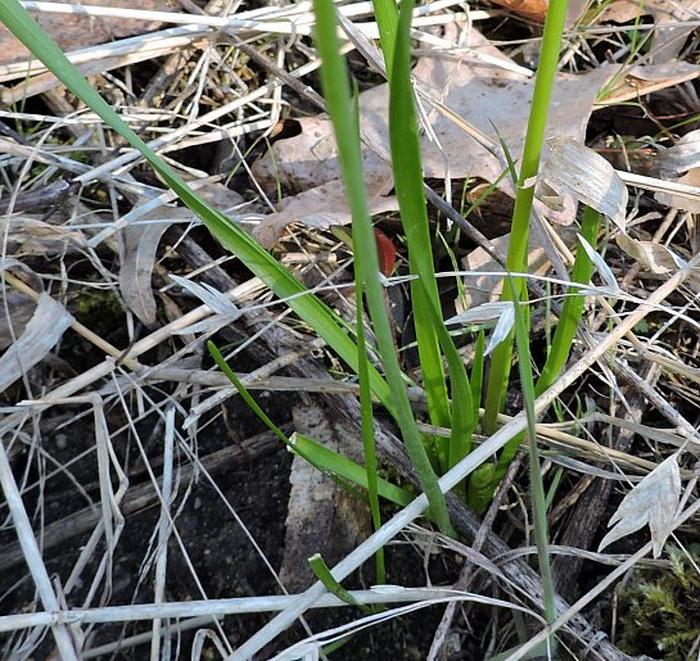
Photographic Location: A prairie at a nature preserve in Fayette County, Illinois. The photographs were taken by Keith & Patty Horn (Copyright © 2016).
Comments: False Garlic (Nothoscordum bivalve) resembles several other species in the Lily family (Liliaceae), especially native Allium spp. (Wild Garlic, etc.). This plant can be distinguished from this latter group of species by the lack of a noticeable garlic or onion aroma from its foliage and bulbs when they are rubbed or crushed. In addition, False Garlic never produces aerial bulblets in its inflorescence. Unlike many similar species in the Lily family, False Garlic has flowers with a yellow base and its basal leaves often have tips that are more truncate than rounded or pointed. Recently, the Lily family has been divided into several families of plants as a result of DNA analysis. Another common name of Nothoscordum bivalve is Crow Poison. The latter name suggests that this plant is poisonous, but the available evidence on this matter is contradictory.
Cultivation: The preference is an open area with full or partial sunlight, moist to dry-mesic conditions, and a slightly acidic to alkaline soil containing rocky material or sand.
Range & Habitat: The native False Garlic (Nothoscordum bivalve) occurs occasionally in southern Illinois and rarely in central Illinois, while in the northern section of the state it is absent (see Distribution Map). This plant is found primarily in the southeastern United States and Southern Plains region of the country. Illinois lies along its northern range-limit. Habitats include upland prairies, hill prairies, sandy or silty riverbottom prairies, rocky glades (including limestone, dolomite, and chert glades), open upland woodlands, upland savannas, and thinly wooded bluffs. In Illinois, False Garlic is found in higher quality natural areas, where it probably benefits from occasional wildfires and other kinds of disturbance if it reduces competition from woody plants.
Faunal Associations: The nectar of the flowers attracts cuckoo bees (Nomada spp.), green metallic bees (Augochlorella spp.) and other Halictid bees, Andrenid bees (Andrena spp.), bee flies, and small to medium-sized butterflies. One of the Andrenid bees, Andrena nothoscordi, is a specialist pollinator (oligolege or monolege) of False Garlic (Nothoscordum bivalve). This bee and other small bees also collect pollen from the flowers. Syrphid flies may visit the flowers occasionally to feed on the pollen, but they are less effective at cross-pollination. White-tailed Deer have been observed to feed on the foliage of False Garlic in areas of south Texas with loam or clay-loam soil (Chamrad & Box, 1968), although some authors consider this plant to be poisonous (Pammel, 1911). There is also sophisticated archaeological evidence that prehistoric people, thousands of years ago, cooked the bulbs of this plant in rock ovens in east Texas (Short et al., 2015).

Photographic Location: A prairie at a nature preserve in Fayette County, Illinois. The photographs were taken by Keith & Patty Horn (Copyright © 2016).
Comments: False Garlic (Nothoscordum bivalve) resembles several other species in the Lily family (Liliaceae), especially native Allium spp. (Wild Garlic, etc.). This plant can be distinguished from this latter group of species by the lack of a noticeable garlic or onion aroma from its foliage and bulbs when they are rubbed or crushed. In addition, False Garlic never produces aerial bulblets in its inflorescence. Unlike many similar species in the Lily family, False Garlic has flowers with a yellow base and its basal leaves often have tips that are more truncate than rounded or pointed. Recently, the Lily family has been divided into several families of plants as a result of DNA analysis. Another common name of Nothoscordum bivalve is Crow Poison. The latter name suggests that this plant is poisonous, but the available evidence on this matter is contradictory.
0
0
文章
Miss Chen
2018年01月19日

Description: This perennial plant is 2-5' and unbranched. The central stem is green or dark red, and it has short stiff hairs. The leaves toward the base are up to 12" long and 1" wide, becoming progessively shorter and narrower as they alternate up the stalk. The leaves are sufficiently crowded together that they appear whorled. They are narrowly lanceolate or linear, dull green or bluish green, and usually slightly pubescent. The margins are smooth or slightly ciliate.
The central stem terminates in an erect spike-like inflorescence with pink or purplish pink composite flowers. This inflorescence is about ½–1½' long, with the composite flowers more or less densely distributed along its length. The individual flowers are crowded together into buttons about 1" across. Each flower has 5 lobes that spread outward from the corolla tube, from which emerges a long divided style that is often curly. There is no floral scent. The blooming period occurs from late summer to early fall and lasts about 3 weeks for individual plants. Like other Liatris spp., the flowers of Rough Blazingstar begin to bloom at the top of the flowering stalk, and gradually bloom downward as the season progresses. The achenes have large tufts of stiff hair that are light greyish brown, which enables them to be distributed several feet by the wind. The root system consists of a woody corm. Occasionally, offsets develop a short distance from the mother plant, creating small colonies.

Cultivation: The preference is full sun and mesic to dry conditions. The soil can contain significant amounts of loam, clay, sand, or rocky material. However, this plant typically grows in less fertile acidic soil that is rather rocky or sandy. This plant is easy to grow under well-drained conditions, but has a tendency to flop over while in flower if it is spoiled with rich soil or too much moisture. Foliar disease is rarely a problem, and drought resistant is very good, with only a few lower leaves withering away.
Range & Habitat: The native Rough Blazingstar is occasional in central and northern Illinois, but it is uncommon or absent in SE Illinois (see Distribution Map). This wildflower is widely distributed, but rarely forms large colonies in native habitats, unlike Liatris pychnostachya (Prairie Blazingstar). Habitats include mesic to dry black soil prairies, sand prairies, gravel prairies, hill prairies, bald knobs, openings in rocky upland forests, sandy Black Oak woodlands, savannas, limestone glades, dry clay banks above ditches, and open areas along railroads, particularly where prairie remnants occur.

Faunal Associations: Primarily long-tongued bees, butterflies, skippers, and bee flies visit the flowers. Among the long-tongued bees, this includes honeybees, bumblebees, Little Carpenter bees, Miner bees, and Leaf-Cutting bees. Butterfly visitors include Monarchs, Painted Ladies, Black Swallowtails, Sulfurs, and others. Other visitors include Green Metallic bees and other Halictine bees. The latter bees collect pollen primarily, and are not effective pollinators. The caterpillars of the rare Schinia florida (Glorious Flower Moth) feed on the flowers and seed capsules of this and other Liatris spp. Mammmalian herbivores, large and small, readily eat the foliage and stems, including rabbits, deer, groundhogs, and livestock. Sometimes small rodents will dig up the corms and eat them. Consequently, this plant may be scarce where there is an overpopulation of these animals.

Photographic Location: The photographs were taken at Red Bison Railroad Prairie in Savoy, Illinois, Meadowbrook Park in Urbana, Illinois, and the wildflower garden of the webmaster.
Comments: This is a beautiful plant while it is flowering, although the blooming period is rather short. It is possible to extend the season of bloom by planting other Liatris spp, which usually bloom earlier in the year. Among the taller blazingstars, this species prefers drier locations, and can be distinguished from them by the large size of its buttons of flowers. The corms were used as an emergency survival food among some tribes of Amerindians.
The central stem terminates in an erect spike-like inflorescence with pink or purplish pink composite flowers. This inflorescence is about ½–1½' long, with the composite flowers more or less densely distributed along its length. The individual flowers are crowded together into buttons about 1" across. Each flower has 5 lobes that spread outward from the corolla tube, from which emerges a long divided style that is often curly. There is no floral scent. The blooming period occurs from late summer to early fall and lasts about 3 weeks for individual plants. Like other Liatris spp., the flowers of Rough Blazingstar begin to bloom at the top of the flowering stalk, and gradually bloom downward as the season progresses. The achenes have large tufts of stiff hair that are light greyish brown, which enables them to be distributed several feet by the wind. The root system consists of a woody corm. Occasionally, offsets develop a short distance from the mother plant, creating small colonies.

Cultivation: The preference is full sun and mesic to dry conditions. The soil can contain significant amounts of loam, clay, sand, or rocky material. However, this plant typically grows in less fertile acidic soil that is rather rocky or sandy. This plant is easy to grow under well-drained conditions, but has a tendency to flop over while in flower if it is spoiled with rich soil or too much moisture. Foliar disease is rarely a problem, and drought resistant is very good, with only a few lower leaves withering away.
Range & Habitat: The native Rough Blazingstar is occasional in central and northern Illinois, but it is uncommon or absent in SE Illinois (see Distribution Map). This wildflower is widely distributed, but rarely forms large colonies in native habitats, unlike Liatris pychnostachya (Prairie Blazingstar). Habitats include mesic to dry black soil prairies, sand prairies, gravel prairies, hill prairies, bald knobs, openings in rocky upland forests, sandy Black Oak woodlands, savannas, limestone glades, dry clay banks above ditches, and open areas along railroads, particularly where prairie remnants occur.

Faunal Associations: Primarily long-tongued bees, butterflies, skippers, and bee flies visit the flowers. Among the long-tongued bees, this includes honeybees, bumblebees, Little Carpenter bees, Miner bees, and Leaf-Cutting bees. Butterfly visitors include Monarchs, Painted Ladies, Black Swallowtails, Sulfurs, and others. Other visitors include Green Metallic bees and other Halictine bees. The latter bees collect pollen primarily, and are not effective pollinators. The caterpillars of the rare Schinia florida (Glorious Flower Moth) feed on the flowers and seed capsules of this and other Liatris spp. Mammmalian herbivores, large and small, readily eat the foliage and stems, including rabbits, deer, groundhogs, and livestock. Sometimes small rodents will dig up the corms and eat them. Consequently, this plant may be scarce where there is an overpopulation of these animals.

Photographic Location: The photographs were taken at Red Bison Railroad Prairie in Savoy, Illinois, Meadowbrook Park in Urbana, Illinois, and the wildflower garden of the webmaster.
Comments: This is a beautiful plant while it is flowering, although the blooming period is rather short. It is possible to extend the season of bloom by planting other Liatris spp, which usually bloom earlier in the year. Among the taller blazingstars, this species prefers drier locations, and can be distinguished from them by the large size of its buttons of flowers. The corms were used as an emergency survival food among some tribes of Amerindians.
0
0
文章
Miss Chen
2018年01月17日

Description: This perennial wildflower consists of a rosette of slender basal leaves and slightly shorter flowering stems. The basal leaves are up to 12" tall and ½" across; they are linear or linear-elliptic in shape and smooth (entire) along their margins. They are medium to dark green with scattered white hairs. One or more flowering stems up to 8" tall develop from the rosette of basal leaves; they are medium green with scattered white hairs. Each of these stems terminates in a rather loose umbel of two or more flowers. Each flower is about ¾" across and it consists of 6 yellow tepals that are widely spreading and lanceolate in shape. The tepals (especially the 3 outer ones) are often hairy along their undersides while the flower is in bloom. In the center, a yellow pistil is surrounded by 6 stamens with prominent golden yellow anthers. The blooming period occurs from mid-spring to early summer and lasts about 1 month. Sometimes there is a mild floral fragrance. Each seed capsule splits open irregularly, releasing several glossy black seeds that are covered with concentric rows of minute wart-like projections. The root system consists of a small corm.

Cultivation: The preference is full or partial sun, moist to slightly dry conditions, and soil containing loam, sand, or rocky material. This wildflower is not usually bothered by foliar disease during the period of active growth during the spring. It can spread to form loose colonies, but is not particularly aggressive.
Range & Habitat: The native Yellow Star Grass occurs in most counties of Illinois (see Distribution Map). While it is widely distributed, this plant is not particularly common in any given locality. Habitats include prairies, hill prairies, edges of bluffs, savannas, open woodlands and paths through woodlands, fens, sandstone glades, abandoned fields, and lawns. Like Claytonia virginica (Spring Beauty), Yellow Star Grass can spread into lawns if mowing is delayed until late in the spring. Fidelity to any particular habitat is relatively low.
Faunal Associations: The flowers attract small bees primarily, including Little Carpenter bees (Ceratina spp.), Mason bees (Osmia spp.), and Halictid bees (Halictus spp., Lasioglossum spp., & others). These insects collect pollen and they are females. Other insect visitors include Syrphid flies and beetles that feed on the pollen. The flowers do not produce nectar. Cross-pollination is required for fertile seeds to develop. Among vertebrate animals, small rodents occasionally eat the corms. Otherwise, little information is available regarding this plant's relationships to other fauna.
Photographic Location: The photographs were taken at a cemetery prairie and a wooded bluff in east-central Illinois.
Comments: This dainty wildflower is like a miniature jewel when it is in bloom. It is rarely more than 6" in height. No other native wildflower within the state closely resembles it, making identification relatively easy

Cultivation: The preference is full or partial sun, moist to slightly dry conditions, and soil containing loam, sand, or rocky material. This wildflower is not usually bothered by foliar disease during the period of active growth during the spring. It can spread to form loose colonies, but is not particularly aggressive.
Range & Habitat: The native Yellow Star Grass occurs in most counties of Illinois (see Distribution Map). While it is widely distributed, this plant is not particularly common in any given locality. Habitats include prairies, hill prairies, edges of bluffs, savannas, open woodlands and paths through woodlands, fens, sandstone glades, abandoned fields, and lawns. Like Claytonia virginica (Spring Beauty), Yellow Star Grass can spread into lawns if mowing is delayed until late in the spring. Fidelity to any particular habitat is relatively low.
Faunal Associations: The flowers attract small bees primarily, including Little Carpenter bees (Ceratina spp.), Mason bees (Osmia spp.), and Halictid bees (Halictus spp., Lasioglossum spp., & others). These insects collect pollen and they are females. Other insect visitors include Syrphid flies and beetles that feed on the pollen. The flowers do not produce nectar. Cross-pollination is required for fertile seeds to develop. Among vertebrate animals, small rodents occasionally eat the corms. Otherwise, little information is available regarding this plant's relationships to other fauna.
Photographic Location: The photographs were taken at a cemetery prairie and a wooded bluff in east-central Illinois.
Comments: This dainty wildflower is like a miniature jewel when it is in bloom. It is rarely more than 6" in height. No other native wildflower within the state closely resembles it, making identification relatively easy
0
0




